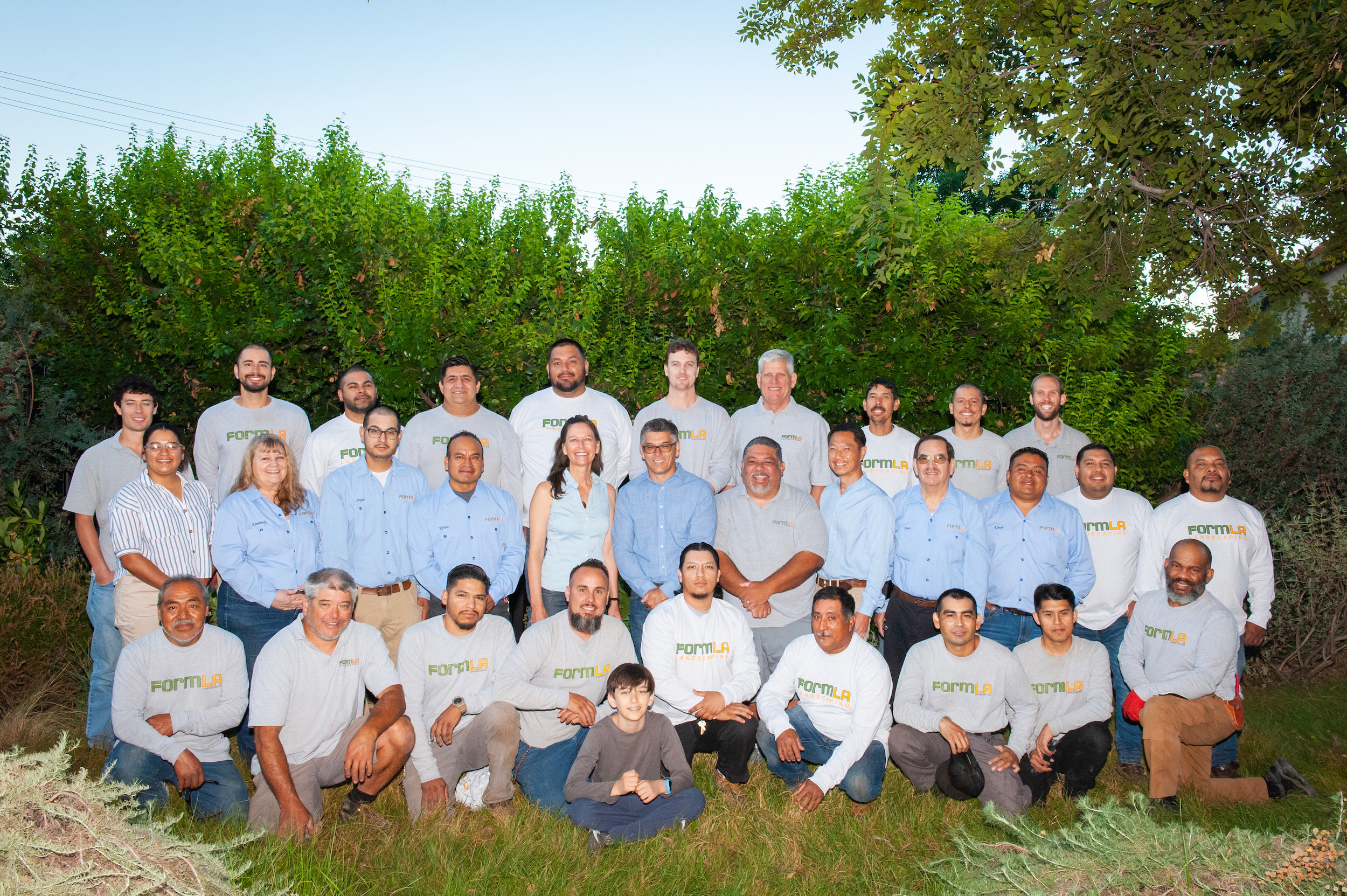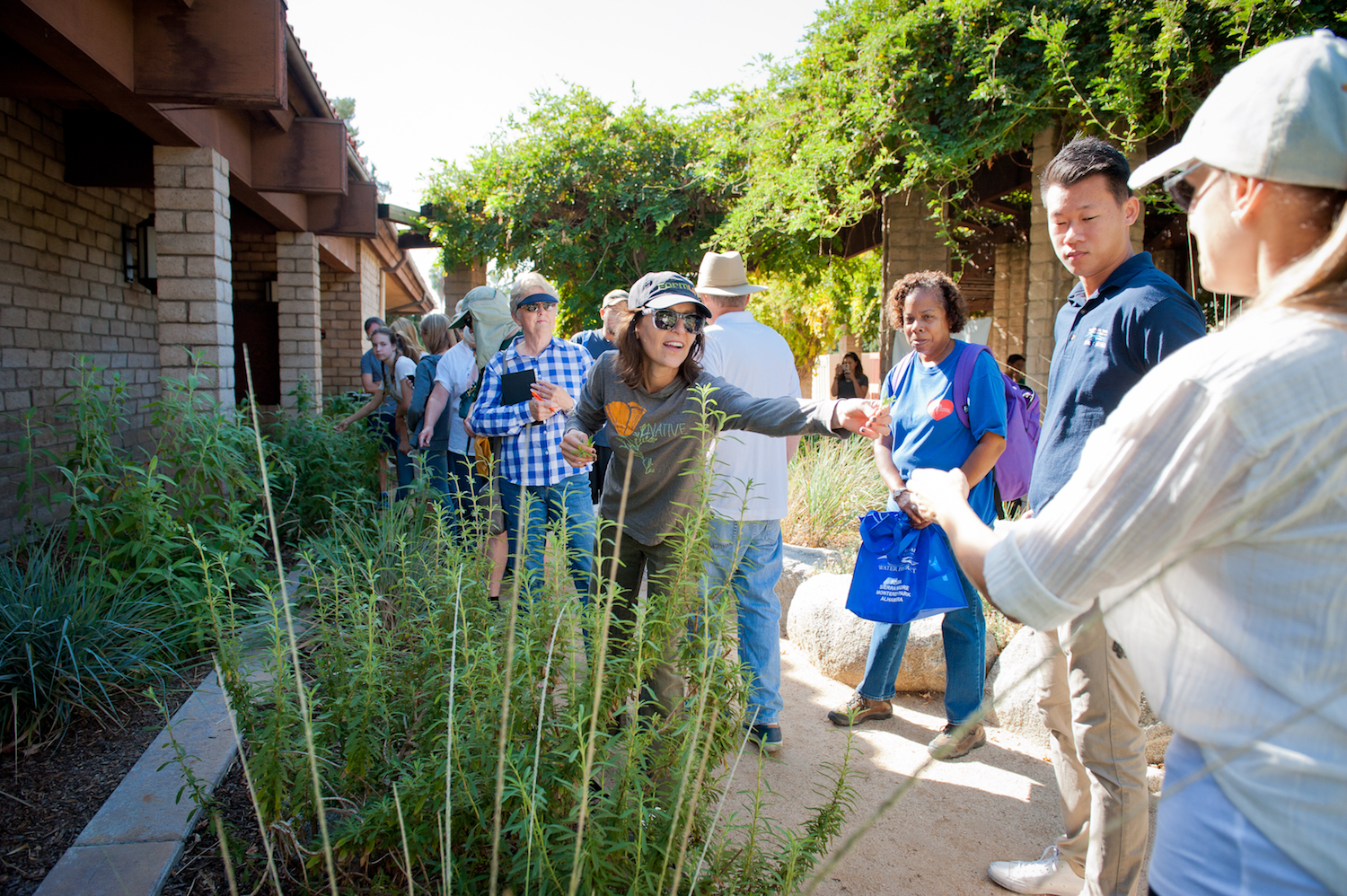our clean air commitment protects our health and yours
October 2023. By Cassy Aoyagi: As the first landscaper serving LA County to be affirmed as a Zero Emissions Landscaper by the California Air Resources Board, we continually look for ways to take our clean air performance to the next level. Each year, we take the Coalition for Clean Air‘s Clean Air Pledge and look for next steps and new ways to protect the health of our teams, our clients, and all Angelenos.
Here’s an update on our clean air impacts.

Equipment
We are early adopters of clean air equipment.
New EVs+Infrastructure: We have begun replacing our fleet with electric vehicles. Watch for our new Ford Transit and Ford Lightening! To support our new vehicles, we’ve also installed clean air infrastructure.
Closed Truck Beds: The refuse and green waste we remove from gardens is transported in fully enclosed trucks – nothing escapes to dust your car or the air of LA.
Electric Equipment: Where power is necessary, we’ve long used all-electric equipment. Replacing just one blower saves the pollution of a 2400 mile drive each day. It also saves the team member operating that equipment from directly inhaling its emissions.

Practices
While equipment tends to catch eyes, our day-to-day practices may have even greater impact.
Routes+Schedules: Whether driving EVs or standard vehicles, our routing saves vehicle miles traveled, and our schedules minimize our time on the road. Both maximize our clean air impacts.
People Power: We’ve always preferenced people powered actions over power equipment. You’ll see us sweeping, raking, clipping, pulling and structural pruning where others mow, blow, weed-wack, and chain saw. This doesn’t just save the air, it keeps foliage healthier and means we can come and go without disturbing a bird’s nest, sleeping baby or a Zoom meeting!
Sustainable Landscapes: There is inherent good in our profession. Trees and foliage, composting, and growing food locally all help clean the air. We spend our days providing these assets! It’s important that, even when we maintain non-native foliage, we stick to our commitment of adding no chemical pesticides or fertilizers. While we usually speak about the water-quality saving benefits of this practice, this also keeps toxins from the air.

Wildfire Defense: With every Fountain, Pampas and Mexican Feather Grass we remove, with every Zone 0 and defensible landscape we build, We Save LA a little fire risk. This impact may be the hardest for us to quantify – it is also among the most important of our clean air contributions.
Industry Influence: We advocate for industry change every chance we get. We want each landscaper to understand just how important clean air actions are to their health as well as the health of our habitats.

Advocacy+Education: How LA looks, how healthy and safe we are in 2050 comes down to the landscaping decisions Angelenos make right now. We walk our values, but it’s important to talk them too. We educate and encourage every landscaping consumer, including those who do their own landscaping to consider the impacts of landscaping choices on LA’s health and resilience. We encourage builders, developers and planners to hold space for nature and make wise landscaping descisions.
We believe Angelenos make our own luck. Our clean air commitment is just one of the ways We Save LA. Join us? Take the Clean Air Pledge.
Sources and Resources
California Air Resources Board (CARB)
CARB: Health Impacts of Leaf Blowers
CARB: Reports and Information on Zero Emissions Landscape Equipment
Coalition for Clean Air
Clean Air Day
South Coast AQMD Equipment Rebates
Be Good to Your Heart
Make Our Own Luck